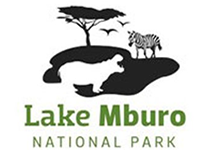Lake Mburo National Park lies within densely settled, economically active pastoral lands. UWA’s community strategies have included the provision of livestock water dams, employment for local guides, and fencing partnerships with landowners in hotspot conflict zones.
In 2012, local herders signed a conditional grazing agreement allowing limited dry-season access to buffer areas.
This remains one of the few formalised grazing-access models in Uganda’s protected area system.
Around 20 percent of the park’s gate fees are shared with sub-counties bordering the park, although delayed disbursements and lack of transparency have occasionally strained this arrangement.
Still, some households near Nshara and Rurambira now derive indirect income from tourism and ranger recruitment.
Tourism growth has been steady, with the park receiving between 20,000 and 30,000 visitors annually over the last decade, according to UWA’s 2019 performance report.
Most visits are short-stay stopovers from Kampala–Mbarara transits, but longer stays have increased due to lodge developments in Rwakobo and Akageti.
Key activities include game drives, boat excursions, horseback safaris, and birding. The park’s central location and road connectivity make it accessible, though poor internal track maintenance during rainy seasons still limits mobility.
Interpretive signage, though improved, remains minimal.
Conservation Challenges and Policy Outlook
Lake Mburo continues to face pressure from unregulated grazing, invasive plant species, and occasional poaching. Community-conservation partnerships have improved, but enforcement must remain adaptive.
The 2020–2030 Protected Areas System Plan includes Lake Mburo as a critical ecological corridor linking the cattle corridor to the Lake Victoria wetlands.
Policy experts recommend increased budget allocation for buffer zone management, ecological research stations, and restoration of wildlife corridors toward Lake Nakivale.
Shifts in Conservation Attitudes
The perceived benefit of conservation efforts diminishes when losses go uncompensated. Although the Uganda Wildlife Authority has introduced community benefit schemes, such as education bursaries and borehole drilling, their impact remains uneven.
Households directly affected by conflict report limited participation in decision-making or access to these benefits.
A 2023 study by Uganda Christian University found that only 42 percent of community members in Kanyaryeru believed wildlife conservation served their interests.
The remainder expressed views ranging from frustration to open hostility. Where previous generations respected wildlife as a shared resource, younger residents now often see it as a liability.
Interestingly, attitudes vary by livelihood type. Pure pastoralists tend to view conflict as manageable and episodic. Small-scale crop farmers express stronger negative sentiment, likely due to the more visible and repeated nature of crop losses.
The social fabric around Lake Mburo is adapting, but not always in ways that favour coexistence. The emotional distance between people and protected species is widening.
If conservation efforts do not address this perception gap, long-term support for protected areas could erode further.
Current Mitigation Measures and Their Effectiveness
Tier 1: Mitigation Measures in Use
| Strategy Type | Implementers | Description |
| Traditional guarding | Farmers, youth groups | Night-time crop patrols with fires, drums, and metallic objects to scare away animals. |
| Physical barriers | Households, NGOs | Use of thorn fencing, wire enclosures, and deep trenches, especially near banana fields and kraals. |
| Park outreach teams | Uganda Wildlife Authority | Conduct sensitisation meetings, distribute chilli-coated ropes, and advise on land-use zoning. |
| Wildlife scouts | Local councils, conservation NGOs | Trained local volunteers who alert residents and report damage cases to authorities. |
| Livelihood substitution projects | NGOs (e.g., Nature Uganda) | Beekeeping, eco-tourism kiosks, and craft groups are indirect measures to mitigate conflict. |
| Reforestation strips | Community associations | Planted buffer strips between farmland and park edge, often using non-palatable trees. |
| Education bursaries and water point construction | UWA Community Revenue Sharing scheme | Projects funded through park entrance revenue (20 percent) to compensate local communities. |
Tier 2: Observed Field Effectiveness
| Strategy | Observed Outcome |
| Guarding | Labour-intensive and only partly successful. Fatigue reduces nightly vigilance. Many animals adapt to deterrents over time. |
| Barriers | Effective against small wildlife but ineffective against hippos and buffalo. Maintenance is costly, and materials degrade quickly. |
| Outreach teams | Sensitisation improves knowledge, but slow incident response weakens trust in authority. Messaging is rarely tailored by livelihood type. |
| Wildlife scouts | Functional early warning system. Limited coverage and no formal incentive structure. Attrition is high without continued support. |
| Alternative livelihoods | Creates goodwill, particularly among women’s groups. However, scale is limited and does not directly reduce wildlife intrusions. |
| Reforestation strips | Promising in theory. Requires strong communal buy-in and long-term commitment, which is lacking in some sub-counties. |
| Revenue-sharing projects | Visible but disconnected from real-time conflict zones. Damaged farms often see no project benefit directly linked to losses. |
